Gardeners’ hands really do take a beating. And not everyone out there appreciates our tomato-green, grimy hands, and nails the way we fellow gardeners do.
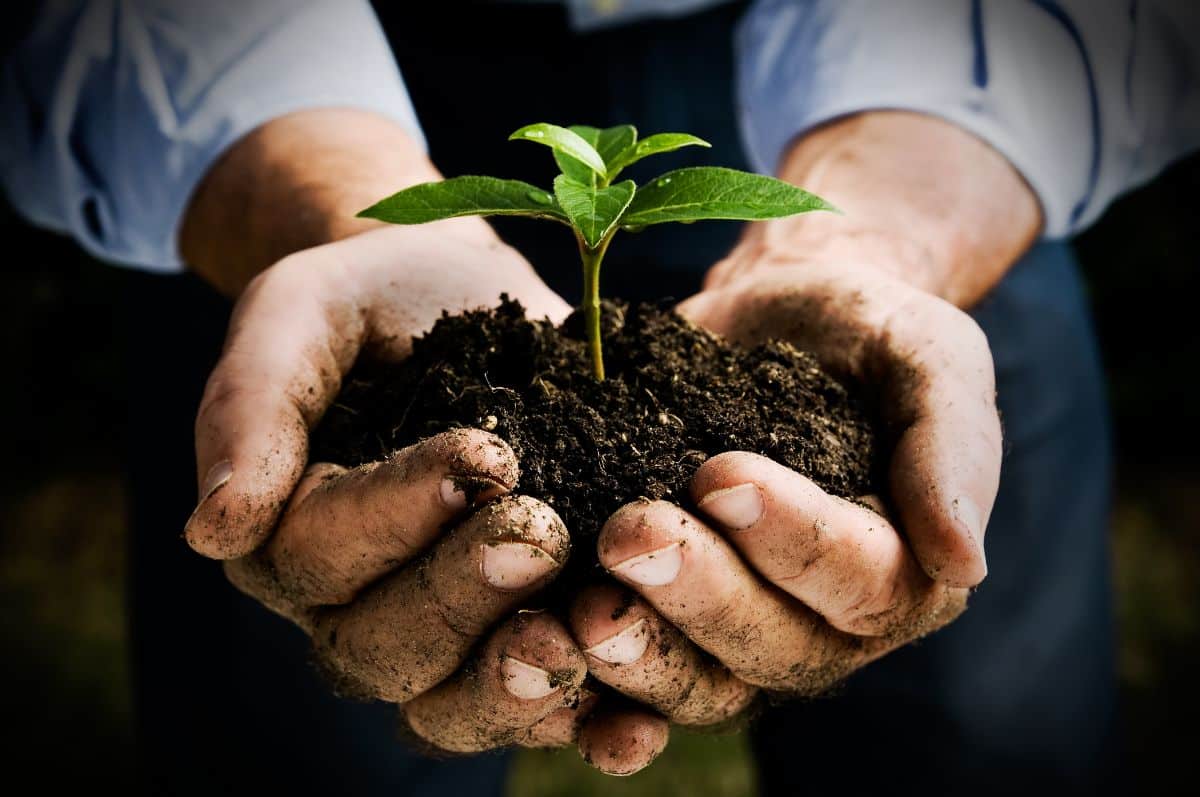
So what’s a gardener to do? Quitting gardening is not an option, obviously. Instead, we’ve gathered the best hand and nail care tips for gardeners. These easy hacks will keep your hands fit for company, no matter how much weeding or tomato pruning you do.
Jump to:
- Gloves, the Obvious (But Not Only) Choice
- Tips and Hacks to Keep Gardener’s Hands Looking Good
- 1. Remove rings and jewelry
- 2. Moisturize before you don your gloves and gear
- 3. Use a protective barrier cream before you garden
- 4. The soap-under-the-nails trick
- 5. Petroleum jelly for cuticle care
- 6. Keep nails trimmed
- 7. Keep nails filed
- 8. Keep cuticles pushed back and in good repair
- 9. Use a nail hardener or strengthener
- 10. Paint on the dark colors
- 11. Baking soda lemon scrub
- 12. Sugar scrub
- 13. Oats and warm water scrub
- 14. Olive oil and salt or sugar cleaning scrub
- 15. Antimicrobial essential oils
- 16. Use a nail brush or toothbrush
- Good Enough for Company
Gloves, the Obvious (But Not Only) Choice
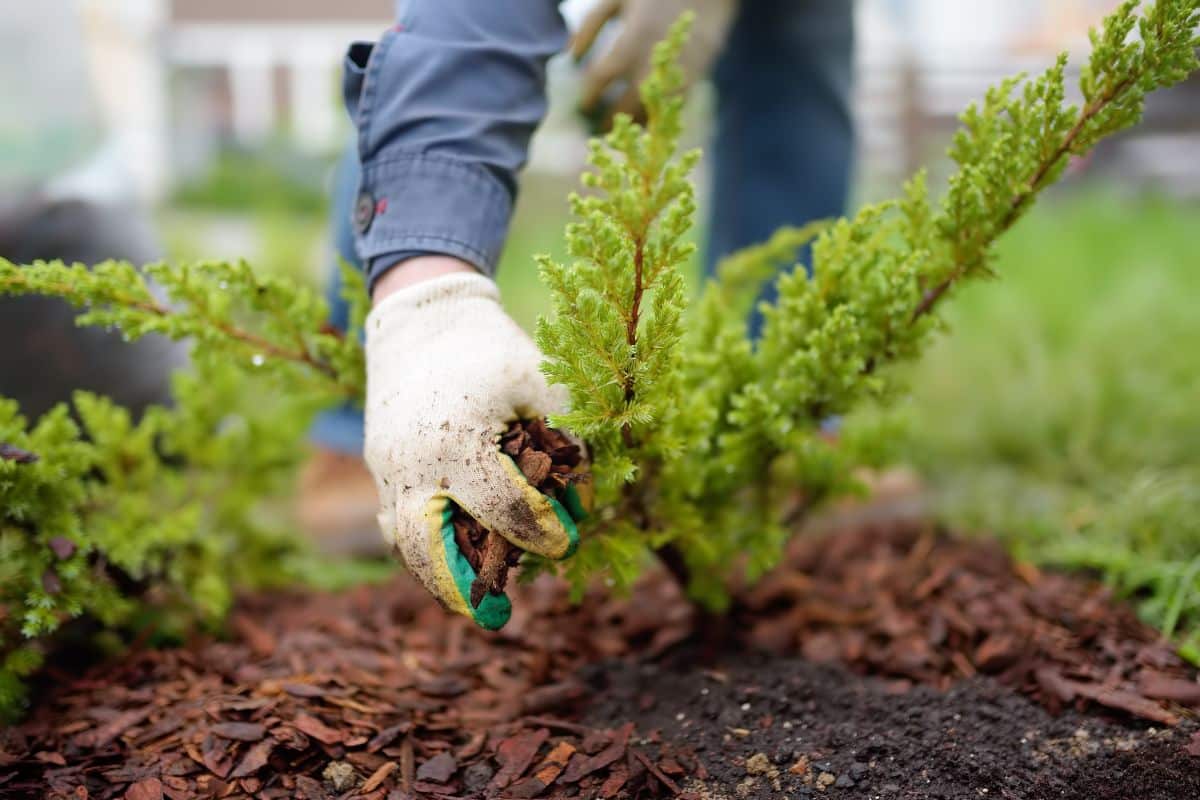
Gardening gloves are an obvious choice for protecting your hands from stains and injuries in the garden. No list of gardener’s hand care tips would be complete without mentioning that which goes without saying: Wear gloves when you garden. We recommend it.
The type of gloves you choose matters, too. For light gardening, or if all you want to do is keep a layer between you and dirt, a nice pair of light cotton gloves will do the trick. If you want to protect yourself from stronger stuff, like stinging nettles, thorns, or rocks, we’d suggest going with something stronger in the palm and fingertips. Gloves with rubber-dipped palms and fingers or leather gloves provide good protection.
If you’ll be in the thick of it with plants with prickers, thorns, woody stems, or potential reactive oils and substances like poison ivy, take extra precautions and wear gloves with long cuffs. Long cuffs will keep your lower arms safe, too. Consider pairing them with long-sleeved clothing or protective gardening sleeves.
But like we said, gloves are a pretty obvious solution, so we don’t need to wax on about them. Besides that, even good gloves can only do so much to protect a gardener’s hands.
There may also be times when wearing gloves isn’t a great option—like when it’s hot outside or when you want all your fine motor capabilities at your disposal and you don’t want bulky, fat-fingered gloves in your way.
Let’s look at some less obvious answers to the question of how to keep your hands and nails presentable throughout the garden season.
Tips and Hacks to Keep Gardener’s Hands Looking Good
Here’s a mix of tips and hacks to keep your gardening hands healthy and presentable for the general public:
1. Remove rings and jewelry
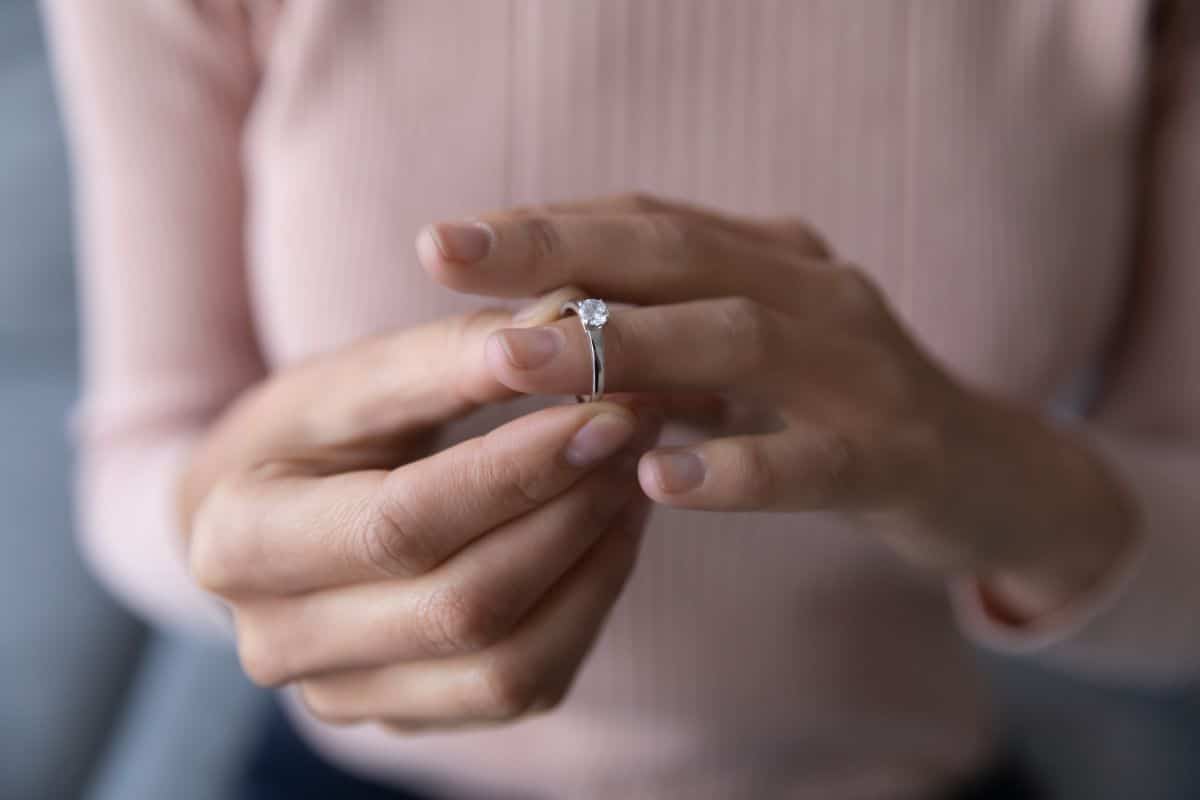
Before you do anything, it’s a good idea to take off all your rings and hand or wrist jewelry. First, this is what's best for your jewelry. Gardening is dirty work, and that dirt packs into rings and jewelry, and it loves to cake in, around, and under stones. Not only does this look bad, but it’s not good for your settings. Gardening with rings and precious gems is a good way to lose a stone.
There’s another good reason why you should take off all your rings and jewelry. Gardening products and plant juices get under rings, and they get trapped there. They can even stay when you wash your hands. Some of those plant juices and products can be highly irritating. This can cause reactions, bumps, and rashes, including poison ivy rash. (There are a lot of plant juices that can cause lasting irritation just from being trapped, so don’t make the mistake of thinking this is an issue limited to poison ivy. Even cutting or peeling some vegetables can cause irritation when rings trap things. Squash comes to mind!)
Rings (and other jewelry, too) can also be a safety hazard. People have had fingers skinned, cut, slivered, and detached when working with rings on. This is especially important when using any type of power tool or powered equipment.
2. Moisturize before you don your gloves and gear
When you are wearing gardening gloves, it’s smart to put on some good hand lotion first. Dried, rough hands that lose sensation are one of the bigger problems for gardeners. If you apply a moisturizing salve or hand lotion before you go to the garden, those gloves can help to lock in the moisture for longer, protecting your skin and keeping it supple.
3. Use a protective barrier cream before you garden

More than just moisturizing, use a heavy barrier cream or salve before you go out. Use something heavier than just a lotion—petroleum-based jelly or salve is best. You want a salve that is thicker than a lotion, something that’s close to solid at room temperature.
This is good to do with gloves on, as mentioned above, but this is also a good thing to do if you’re going out without gloves because it will give your hands a hardier layer of protection and reduce drying out. Also, dirt will get trapped and stick to the salve, which can be washed off with a good oil-cutting soap.
4. The soap-under-the-nails trick
This is a hack that’s been around since before hacks were called hacks.
To keep the underside of your fingernails clean, before you head out to the garden, scrape your nails over a bar of soap. If the soap is hard, run it under water for a few seconds, then drag your nails over the bar in one direction until the bottoms of your nails are packed with soap.
When you come inside, just run your nails under warm water until the soap dissolves and the dirt washes away.
You get extra points if you use yellow bar soap and/or antibacterial soap. This will help prevent infection if you cut your fingertips. Yellow bar soaps like Dial or Fels Naphtha soap bars are good at dissolving the oils from poison ivy, so they might help keep the oils out from under your nails, which is one place oils easily get trapped and spread.
5. Petroleum jelly for cuticle care

Apply petroleum jelly salve to your nail beds before you go out gardening (like when you rub your nails through your bar soap). The salve will keep your cuticles and the skin around your nails soft, so they won’t crack or tear. Also, dirt and soil will stick to the petroleum jelly instead of imbedding into your nail beds. The dirt washes away with petroleum jelly when you wash your hands.
This is both a protection and a way to keep your hands cleaner while preventing staining and dirt-soiling.
If you don’t like petroleum jelly, you could use a similarly heavy salve, like one that is lanolin based, made with shea butter or coconut oil. Petroleum jelly-based salves tend to stay on the longest, though, so they’ll collect the most dirt.
6. Keep nails trimmed
Long nails are easily caught by plant leaves and stems. Your nails are likely to give before the plant does. Longer nails also trap more dirt and grime. If you’re willing to sacrifice your long manicure for your gardening habits, it’s a good idea.
7. Keep nails filed

When you do trim your nails, or when you catch one and break one, be sure to file it smoothly. Don’t leave jagged edges that will catch, grab, and tear when you’re working. Jagged edges are also more likely to keep cracking down the nail.
8. Keep cuticles pushed back and in good repair
Cuticles and nail beds really take a beating in the garden. They dry out and crack easily. If you keep them soft, your nail cuticles won’t rip or crack as easily, and they’ll have a better connection to the nail bed.
If you have to push them back when they’re dry and damaged, they’re less likely to adhere to your nail the way they should, and that’s when you get cracks and gaps that invite dirt and pathogens to damage them. Use cuticle oil or moisturizer regularly and keep cuticles gently pushed to the back of your nails.
Make cuticle care a regular habit when you trim and file your fingernails.
9. Use a nail hardener or strengthener
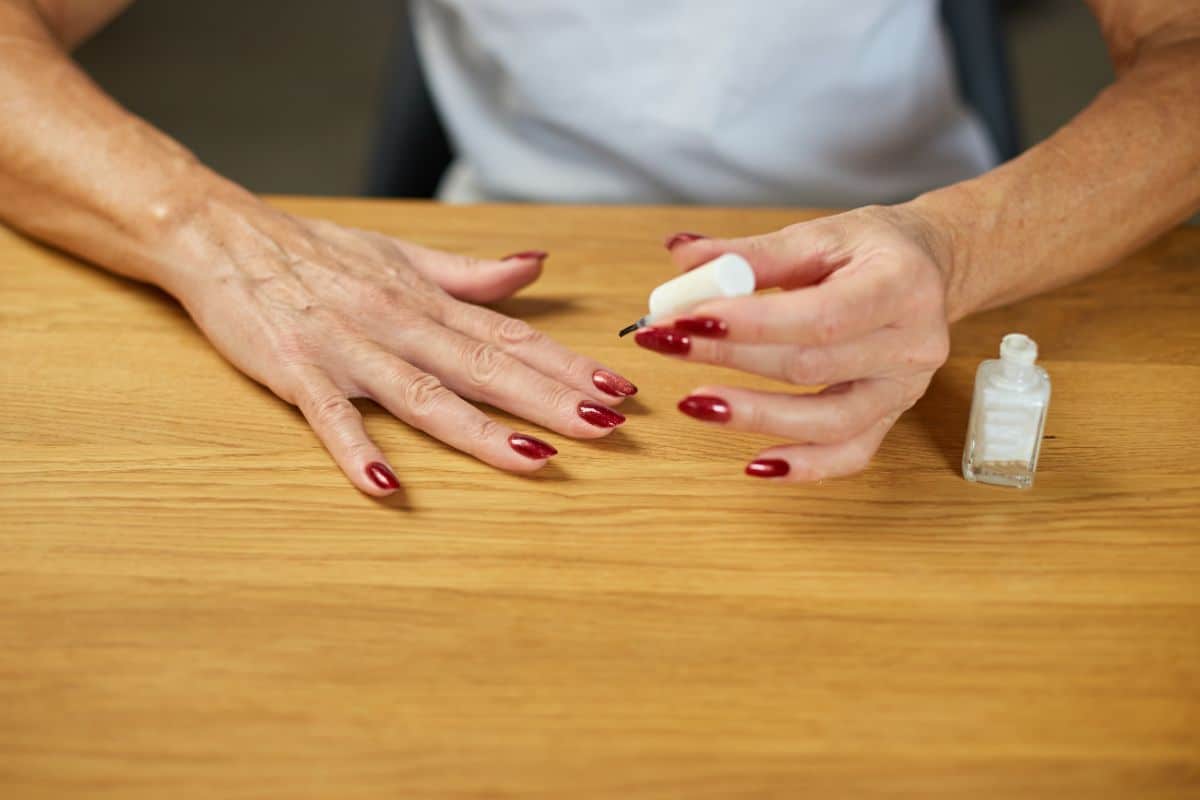
Fingernails get dried and flaky in the garden. A nail hardener is a good way to stiffen them up so they are less prone to breaking. This is more important for people with weak, thin nails or whose nails are prone to splitting and breaking. Nail hardeners are clear, so anyone can use them.
10. Paint on the dark colors
Staining is one of the things that make gardener’s hands look the worst. Fingernails show stains the worst, and it can take a long time for stains to grow out. Even if your hands are clean, they may not look clean if they’re stained from plants and berries.
When you can’t clean it off, cover it up. Use a dark-colored fingernail polish that hides garden stains. Depending on what you’re working on or what you’re picking, you may even be able to match the color—like with this wild blackberry colored polish. And no one needs to know!
11. Baking soda lemon scrub
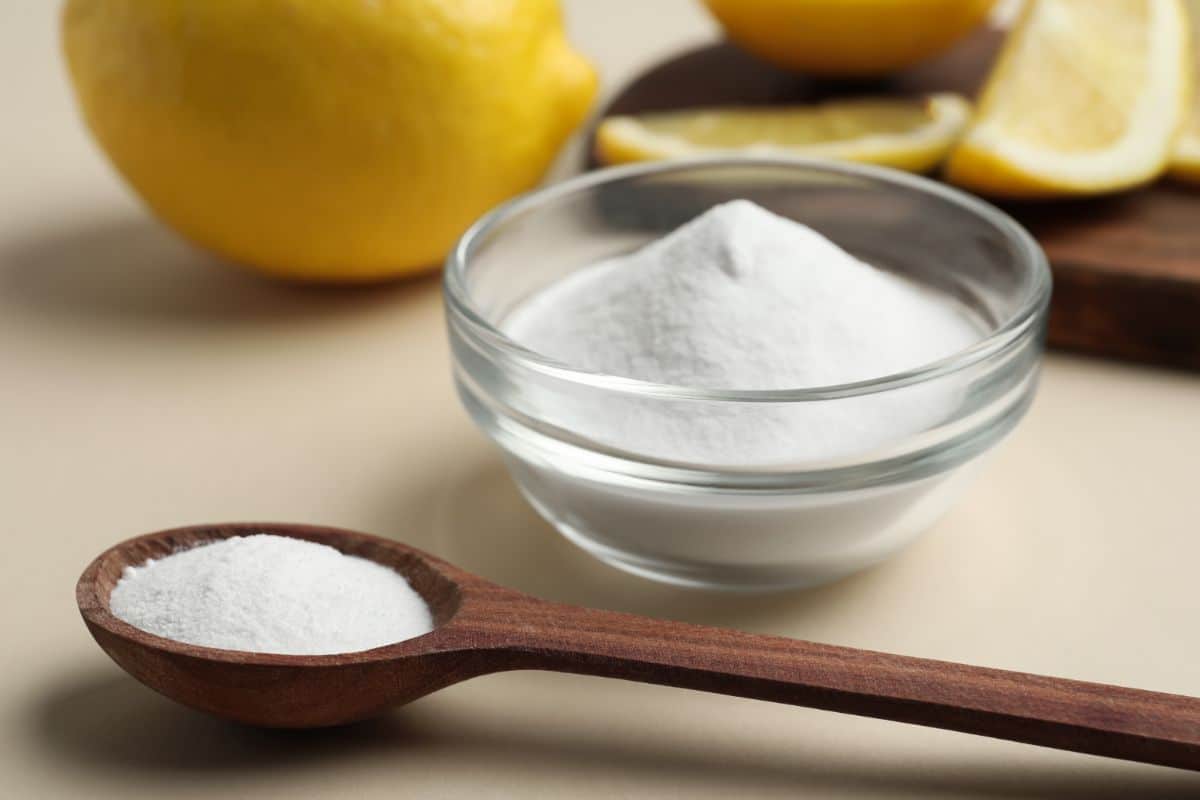
Mix baking soda and lemon juice together in equal parts and scrub over your hands to scrub away stains. This combination is also a good deodorizer when you’re working with smelly plants like tomatoes or when you’re preparing things like garlic or onions. Use it with a nail brush or toothbrush to remove stubborn dirt and grime from under fingernails or nail beds. It’s perfect for cleaning up grimy garden toes, too!
12. Sugar scrub
Rub sugar into your hands while you wash to remove dug-in dirt and help exfoliate away the grime. It’s a cheap and simple trick that will leave your hands looking clean and feeling soft and smooth.
13. Oats and warm water scrub
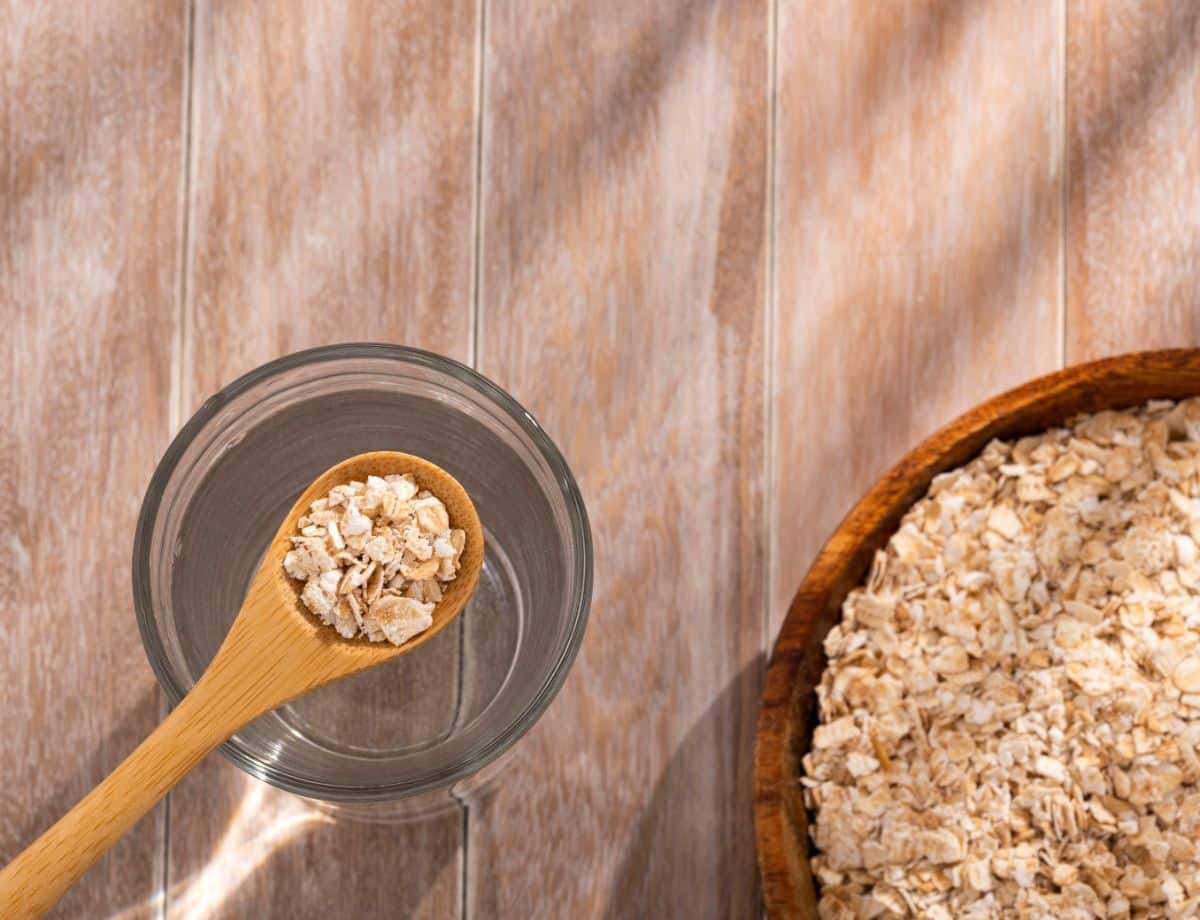
Here’s an all-natural, kind, and gentle cleanser that exfoliates and works well to relieve itching, too. Just add oats!
Normal household oats are coarse enough to scrub off dirt and grime but gentle enough not to make matters worse. Oats are well-known as itch and skin relievers, which is why they’re a common product in soaps, and why doctors and skin care experts recommend you bathe in an oatmeal bath if you have an irritating rash or to relieve itching from reactions like poison ivy.
Oats and water combinations can make good soothing compresses and soaks, too.
14. Olive oil and salt or sugar cleaning scrub
You can make an excellent cleaning and moisturizing scrub with common pantry ingredients. Just combine olive oil with salt or sugar.
Mix a tablespoon of olive oil with half a tablespoon of salt or sugar. Use it to scrub your hands when you come in from the garden.
This mix exfoliates without drying your skin out and without damaging it further. The oil is good for breaking down sticky residues, pitch from shrubs and trees (like stubborn pine pitch), sap, or grimy oils. After rubbing it into your hands, wash as you usually would with soap and warm water.
15. Antimicrobial essential oils

Many essential oils have natural antiseptic and antimicrobial properties. You can add them to any of the oils or scrubs mentioned here. Just add a few drops to your scrubs or salves.
Lemongrass, eucalyptus, peppermint, and orange oils are all effective against many strains of bacteria. Tea tree, thyme, and oregano oils are some other good choices. Some essential oils will even do double-duty as insect repellants (like lemongrass, lemon, mint, and eucalyptus). Tea tree repels insects, too, and it has anti-inflammatory properties, which might help irritated or swollen hands.
16. Use a nail brush or toothbrush
A nail brush or a toothbrush is a good thing for a gardener to have. It will help you reach spaces you can’t, like under fingernails. It will also help you scrub in cleaners and scrubs to get the deep-down dirt. If you don’t want to spend the summer with a dirt-black manicure, a nail brush is a must-have.
Good Enough for Company
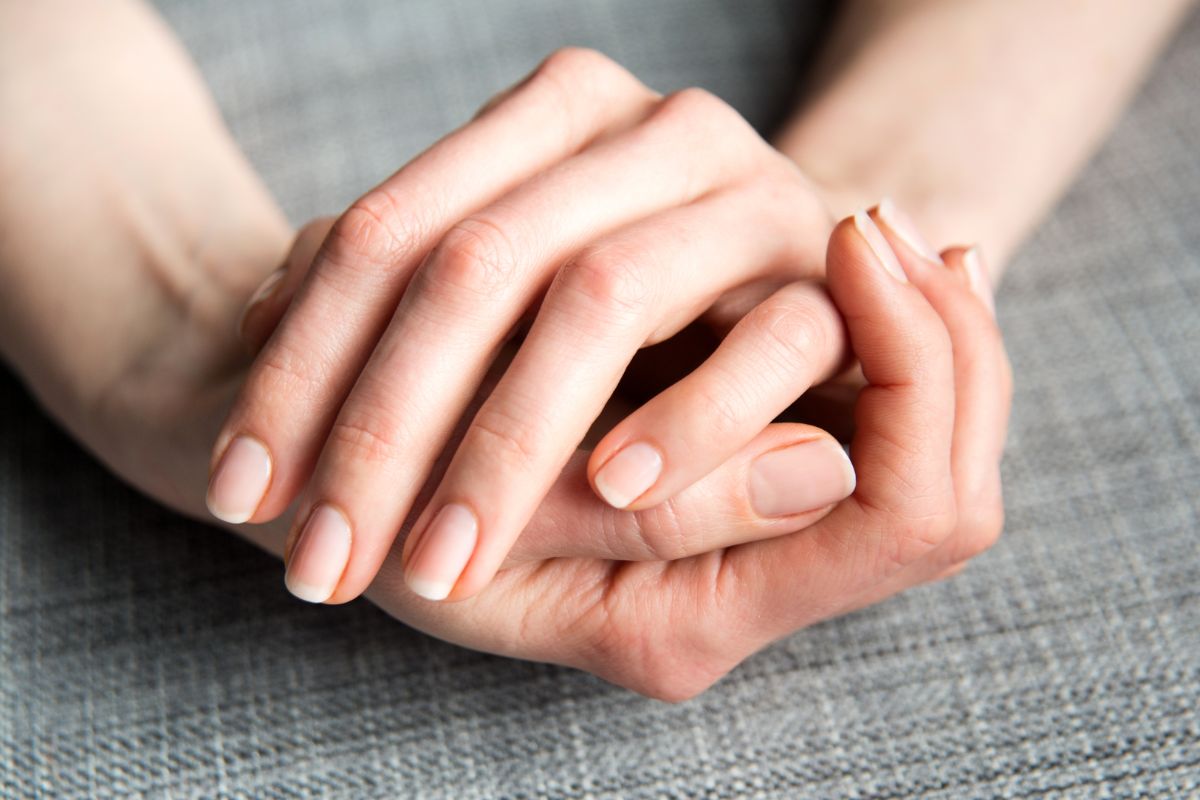
It can be tough to keep your hands looking presentable during the gardening season, but with this list of tips, tricks, and hacks, you’ll be able to keep your hands looking so good everyone will think you gave up your hobby—which we know is out of the question. Instead, just keep your hands in good shape with these simple gardener’s hand hacks.

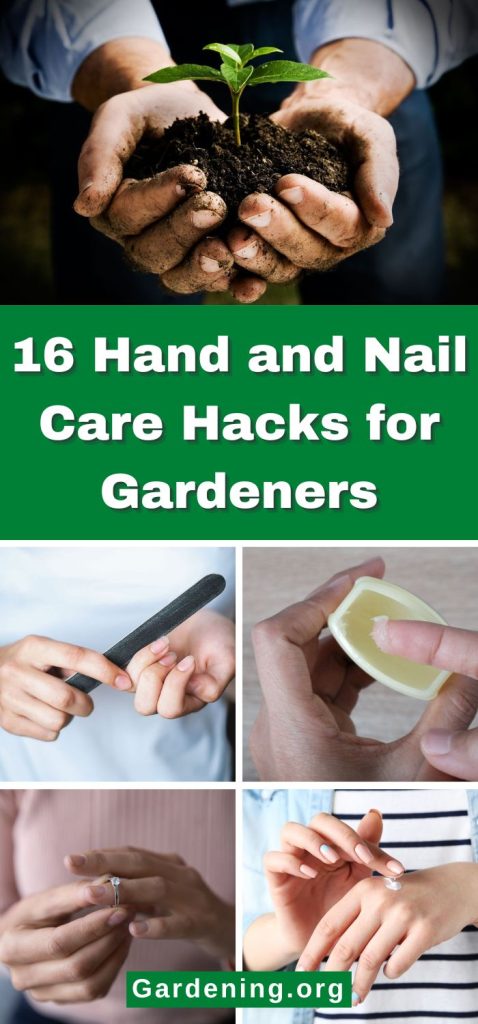

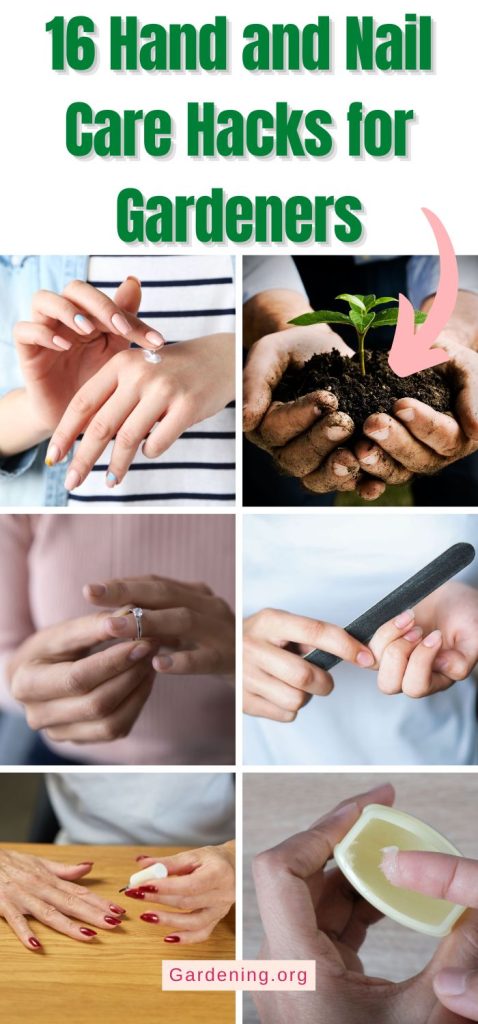
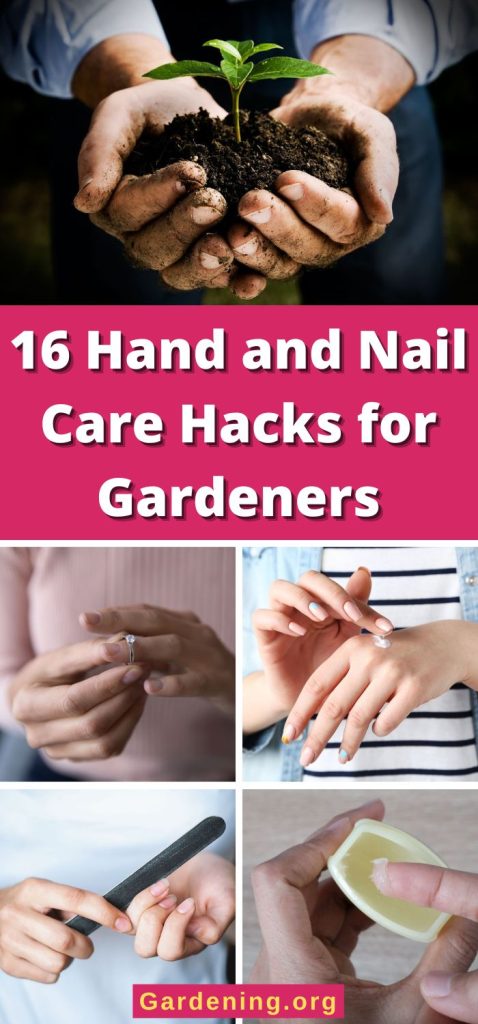

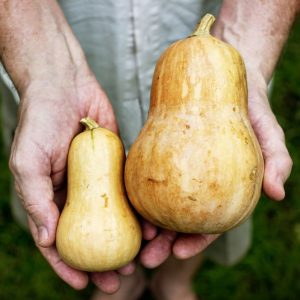
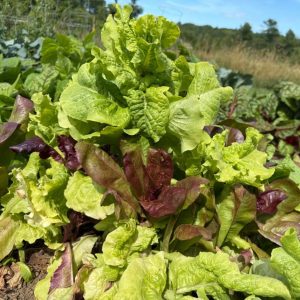
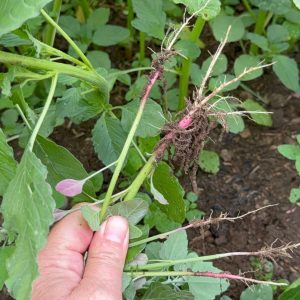
Leave a Reply